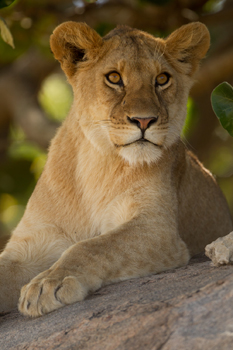
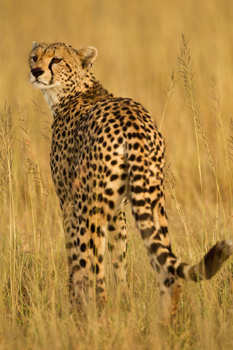
Tanzania
the Northern Serengeti
Ngorongoro Crater
September 29-October 9, 2024
Price: $15095
Tarangire NP Extension
October 9-12, 2024
Price: $3295
Pricing based on 7 participants. Surcharge of US $700 for 5 participants or
US $1700 for 4 participants
An East African Photo Safari is the experience of a lifetime, but one that often becomes a nearly annual experience for many. We’ve been doing photo safaris for over 33 years to Tanzania, and we not only know
what we’re doing photographically to deliver the best possible images you can make, but we also offer something few others can. We also provide the story, the natural history, the reasons why something happened, or why it may happen as we wait. We are photographers, of course, but we are also naturalists, biologists by training, and we take enormous pleasure in interpreting and making sense
of the behaviors you will see.
You can go on a safari with a photo leader and take pictures, but there is no other photo safari that will provide you with the information that explains what you are seeing, that gives meaning to
your photographs and to your experience. As our participants say, it is what truly
sets us apart from all the rest.
The complete brochure below has ALL the details. But here's a quick summation.
Why we are unique
Experience.
33 years leading safaris to Tanzania.
We know the wildlife and how best to utilize your time.
Our rotation system insures you will have the best experience possible.
You are getting two very experienced leaders for the price most tours have for
only one leader, experienced or not.
Why we offer trips in the Fall
The short rainy season has fewer people.
The skies are the most varied, offering the best light for AM and PM shooting.
Predatory babies are usually present at this time.
The unpredictable gnu migration is still likely to be present.
Featuring the Best Photographic Locations
We visit three different locations in the northern and Central Serengeti.
Transit days in the Serengeti are game drives- no lost shooting opportunities.
Who is this safari for
Serious photographers and naturalists.
Folks willing to spend time waiting if it is required.
Patient photographers and naturalists.
This safari is not for 'see it and go' tourists!
Our Unique Rotation System
We rotate participants through vehicles, guides, and us.
We avoid cliques.
Participants get maximum time with us as your guides.
What you can expect from us
The most productive safari possible.
Accurate, informative natural history information.
Professional help in your photography - compositions, positioning, exposure.
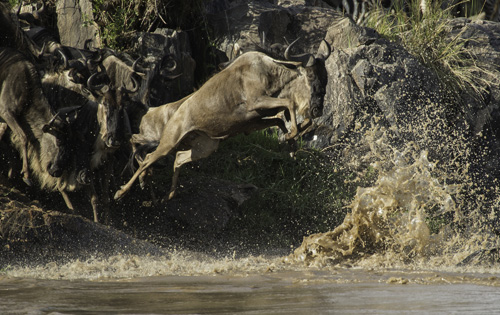


Tanzania
the Northern Serengeti
Ngorongoro Crater
September 29-October 9, 2024
Price: $15095
Tarangire NP Extension
October 9-12, 2024
Price: $3295
Pricing based on 7 participants. Surcharge of US $700 for 5 participants or
US $1700 for 4 participants
An East African Photo Safari is the experience of a lifetime, but one that often becomes a nearly annual experience for many. We’ve been doing photo safaris for over 33 years to Tanzania, and we not only know
what we’re doing photographically to deliver the best possible images you can make, but we also offer something few others can. We also provide the story, the natural history, the reasons why something happened, or why it may happen as we wait. We are photographers, of course, but we are also naturalists, biologists by training, and we take enormous pleasure in interpreting and making sense
of the behaviors you will see.
You can go on a safari with a photo leader and take pictures, but there is no other photo safari that will provide you with the information that explains what you are seeing, that gives meaning to
your photographs and to your experience. As our participants say, it is what truly
sets us apart from all the rest.
The complete brochure below has ALL the details. But here's a quick summation.
Why we are unique
Experience.
33 years leading safaris to Tanzania.
We know the wildlife and how best to utilize your time.
Our rotation system insures you will have the best experience possible.
You are getting two very experienced leaders for the price most tours have for
only one leader, experienced or not.
Why we offer trips in the Fall
The short rainy season has fewer people.
The skies are the most varied, offering the best light for AM and PM shooting.
Predatory babies are usually present at this time.
The unpredictable gnu migration is still likely to be present.
Featuring the Best Photographic Locations
We visit three different locations in the northern and Central Serengeti.
Transit days in the Serengeti are game drives- no lost shooting opportunities.
Who is this safari for
Serious photographers and naturalists.
Folks willing to spend time waiting if it is required.
Patient photographers and naturalists.
This safari is not for 'see it and go' tourists!
Our Unique Rotation System
We rotate participants through vehicles, guides, and us.
We avoid cliques.
Participants get maximum time with us as your guides.
What you can expect from us
The most productive safari possible.
Accurate, informative natural history information.
Professional help in your photography - compositions, positioning, exposure.

Tanzania
the Northern Serengeti
Ngorongoro Crater
September 29-October 9, 2024
Price: $15095
Tarangire NP Extension
October 9-12, 2024
Price: $3295
Pricing based on 7 participants. Surcharge of US $700 for 5 participants or
US $1700 for 4 participants
An East African Photo Safari is the experience of a lifetime, but one that often becomes a nearly annual experience for many. We’ve been doing photo safaris for over 33 years to Tanzania, and we not only know
what we’re doing photographically to deliver the best possible images you can make, but we also offer something few others can. We also provide the story, the natural history, the reasons why something happened, or why it may happen as we wait. We are photographers, of course, but we are also naturalists, biologists by training, and we take enormous pleasure in interpreting and making sense
of the behaviors you will see.
You can go on a safari with a photo leader and take pictures, but there is no other photo safari that will provide you with the information that explains what you are seeing, that gives meaning to
your photographs and to your experience. As our participants say, it is what truly
sets us apart from all the rest.
The complete brochure below has ALL the details. But here's a quick summation.
Why we are unique
Experience.
33 years leading safaris to Tanzania.
We know the wildlife and how best to utilize your time.
Our rotation system insures you will have the best experience possible.
You are getting two very experienced leaders for the price most tours have for
only one leader, experienced or not.
Why we offer trips in the Fall
The short rainy season has fewer people.
The skies are the most varied, offering the best light for AM and PM shooting.
Predatory babies are usually present at this time.
The unpredictable gnu migration is still likely to be present.
Featuring the Best Photographic Locations
We visit three different locations in the northern and Central Serengeti.
Transit days in the Serengeti are game drives- no lost shooting opportunities.
Who is this safari for
Serious photographers and naturalists.
Folks willing to spend time waiting if it is required.
Patient photographers and naturalists.
This safari is not for 'see it and go' tourists!
Our Unique Rotation System
We rotate participants through vehicles, guides, and us.
We avoid cliques.
Participants get maximum time with us as your guides.
What you can expect from us
The most productive safari possible.
Accurate, informative natural history information.
Professional help in your photography - compositions, positioning, exposure.
Tanzania
the Northern Serengeti
Ngorongoro Crater
September 29-October 9, 2024
Price: $15095
Tarangire NP Extension
October 9-12, 2024
Price: $3295
Pricing based on 7 participants. Surcharge of US $700 for 5 participants or
US $1700 for 4 participants
An East African Photo Safari is the experience of a lifetime, but one that often becomes a nearly annual experience for many. We’ve been doing photo safaris for over 33 years to Tanzania, and we not only know
what we’re doing photographically to deliver the best possible images you can make, but we also offer something few others can. We also provide the story, the natural history, the reasons why something happened, or why it may happen as we wait. We are photographers, of course, but we are also naturalists, biologists by training, and we take enormous pleasure in interpreting and making sense
of the behaviors you will see.
You can go on a safari with a photo leader and take pictures, but there is no other photo safari that will provide you with the information that explains what you are seeing, that gives meaning to
your photographs and to your experience. As our participants say, it is what truly
sets us apart from all the rest.
The complete brochure below has ALL the details. But here's a quick summation.
Why we are unique
Experience.
33 years leading safaris to Tanzania.
We know the wildlife and how best to utilize your time.
Our rotation system insures you will have the best experience possible.
You are getting two very experienced leaders for the price most tours have for
only one leader, experienced or not.
Why we offer trips in the Fall
The short rainy season has fewer people.
The skies are the most varied, offering the best light for AM and PM shooting.
Predatory babies are usually present at this time.
The unpredictable gnu migration is still likely to be present.
Featuring the Best Photographic Locations
We visit three different locations in the northern and Central Serengeti.
Transit days in the Serengeti are game drives- no lost shooting opportunities.
Who is this safari for
Serious photographers and naturalists.
Folks willing to spend time waiting if it is required.
Patient photographers and naturalists.
This safari is not for 'see it and go' tourists!
Our Unique Rotation System
We rotate participants through vehicles, guides, and us.
We avoid cliques.
Participants get maximum time with us as your guides.
What you can expect from us
The most productive safari possible.
Accurate, informative natural history information.
Professional help in your photography - compositions, positioning, exposure.

Limited to 7 people
Check out our
trip reports for more information, too!
An Exclusive Shoot Limited to Ten Photographers
Only three photographers per vehicle
Our Photo Safari Highlights
Three Photographers per vehicle maximum - everyone has a full row, with roof or window shooting
Photo Instruction and Guidance in the Field
Fair and Equal Rotation of Photographers - insuring equal time with Joe and Mary Ann and the Driver-Guides
Quality Time at the Best Game Areas
Quality Time and Patience - You will see all the species but
you will see and photograph behavior too.
Three Locations in the Serengeti - The ONLY safaris covering this much area
The Short Rainy Season - Great skies, fewer tourists, sunny mornings, soft light in the PM
Our Interpretation and Expertise - You can rely on our knowledge and experience to help predict
behaviors and photo opportunities
Informal Lunch and Dinner Discussions on What You Saw and what it means
Driver-Guide Tip in included in the tour price
Read our Trip Reports from this trip.
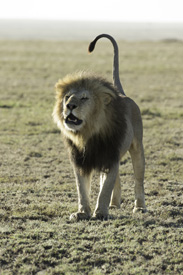
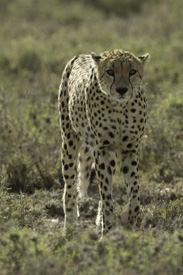
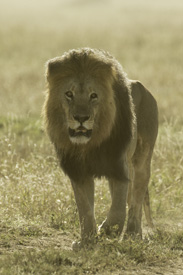
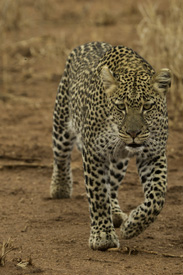
The Northern Serengeti
As you may know, the Serengeti is a derivative of a Maasai word for endless plains or endless grasses, and much of the Serengeti is indeed a huge and seemingly limitless vast grassland. One advantage the Northern Serengeti has over neighboring Kenya's southern edge of the Masai Mara is that this area is just one small section of a protected region that extends for scores of miles in either direction. In the Mara, as I pointed out above, there is only a thirty mile width before you are out of the park, and into the increasingly developed countryside. In the Northern Serengeti, you'll drive for nearly an entire day in either direction before reaching that the edges of the park. Consequently, there is a lot of game!
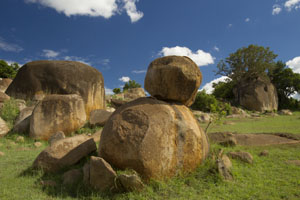
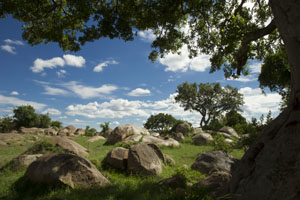
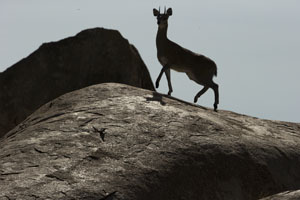
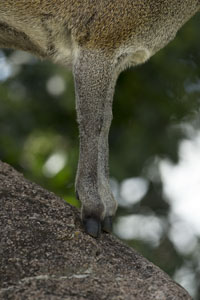 Although much of our game driving, and the location of our luxury mobile camp, is just miles from the border, and we can actually see the antenna of the Mara Serena Lodge at times, the habitat is shockingly different. We were amazed, for here in the northern Serengeti we found some of the most beautiful kopjes we've seen anywhere in the Serengeti. In contrast, there are no true kopjes in the Mara, just miles away! In these photogenic rock formations we might find Leopard, Lion, and almost certainly the interesting and delicate antelope, the Klipspringer, which walks along rocks and cliffs, balanced on the tips of its hooves. Black Rhinos are here, although probably still as threatened by poaching as they are anywhere else. On average, in 2012-13, more than one Black Rhino was killed per day in Africa by poachers! Rhinos give birth to just one baby, after a gestation of 15 or 16 months. Most of this poaching occurs in southern Africa, but no where are these animals safe, and if the trend continues rhinos will soon be extinct in the wild. We have a good chance of seeing and photographing Black Rhinos, either here in the Northern Serengeti or in the Ngorongoro Crater.
Although much of our game driving, and the location of our luxury mobile camp, is just miles from the border, and we can actually see the antenna of the Mara Serena Lodge at times, the habitat is shockingly different. We were amazed, for here in the northern Serengeti we found some of the most beautiful kopjes we've seen anywhere in the Serengeti. In contrast, there are no true kopjes in the Mara, just miles away! In these photogenic rock formations we might find Leopard, Lion, and almost certainly the interesting and delicate antelope, the Klipspringer, which walks along rocks and cliffs, balanced on the tips of its hooves. Black Rhinos are here, although probably still as threatened by poaching as they are anywhere else. On average, in 2012-13, more than one Black Rhino was killed per day in Africa by poachers! Rhinos give birth to just one baby, after a gestation of 15 or 16 months. Most of this poaching occurs in southern Africa, but no where are these animals safe, and if the trend continues rhinos will soon be extinct in the wild. We have a good chance of seeing and photographing Black Rhinos, either here in the Northern Serengeti or in the Ngorongoro Crater.
The Wildebeest or Gnu migration should be in the area, perhaps traveling north to cross the Mara River or doing just the opposite, and moving south. It is impossible to say, although 'normally,' historically, the Gnus moved north into the Masai Mara in late June or July, and started heading south out of the area in September or October. Over the years, however, we've seen the plains of the Mara empty in October and crowded with Gnus a month later. Gnus follow the rains, at least to an extent, but eventually most move south to be at their birthing grounds in the southern Serengeti by February. If the Gnus are here, we'll have a great chance at photographing them at several different crossing points.
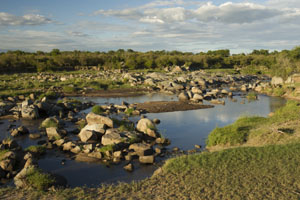
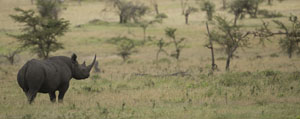
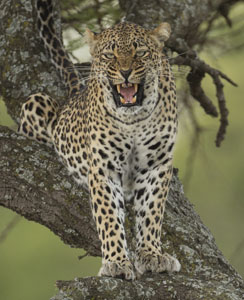
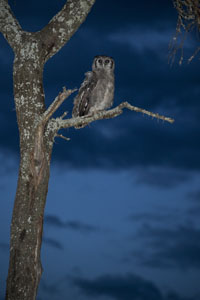
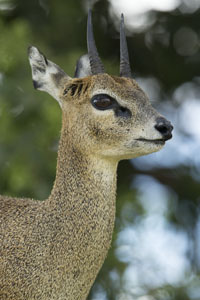
Mara River, from the Tanzania side; endangered Black Rhino; male Lion by spotlight;
an angry Leopard; Verreaux's Eagle Owl and Giraffe on the night game drive;
Klipspringer.
We'll travel from the northern Serengeti and the Mara River area to our next location in the central Serengeti, in the heart of the vast grasslands and where some of our favorite kopjes dot the land. Lion prides, cheetahs, leopards, and a wide variety of plains game and birds inhabit this area.
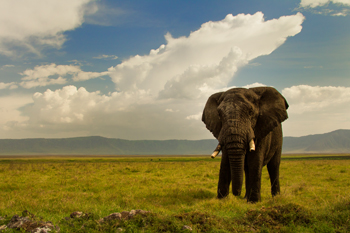
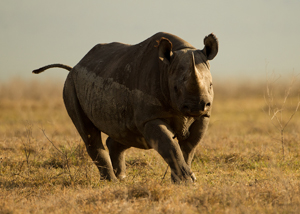
The Ngorongoro Crater
From the Serengeti we'll drive to the world famous Ngorongoro Crater, one of the wonders of the world, which never fails to amaze. Wildlife here is among the most habituated and accessible in all of East Africa, with some of the largest tusker bull elephants, a healthy black rhino population, and a variety of birds and mammals. We'll spend a full day in the Crater, where we should have luck with these great Elephants, as well as the variety of plains game and birds. Spotted Hyenas, Lions, Servals, Hippos, various birds of prey, and more, the Crater offers plenty of subjects.
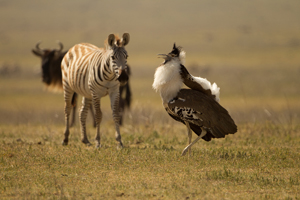
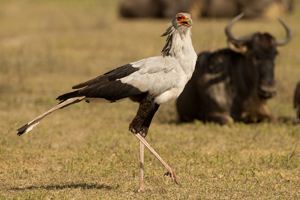
We'll be camping near the crater rim at our outfitter's new luxury camp, Lion's Paw. We're very excited about this, and getting away from the overwhelming and often unpleasant tourist experience that staying at one of the rim's lodges presents. Mary and I camped in then Crater 33 years ago, and it was wonderful. Today, you cannot camp in the crater, and the number of lodges along the crater's rim has probably tripled. There is NO off-road driving in the crater (regardless of vague claims to the contrary), and there is a fair amount of traffic. As I mentioned above the Crater is great for bull elephants and you can usually get close to them. Even though the Crater has a fairly good concentration of black rhinos, they may, or may not, be close to the road. We won't be bored with the variety of close photo subjects.
The main safari ends at this point but we hope that you choose to join us for the Tarangire extension. See below for the details on that option.
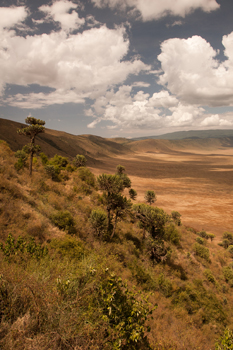
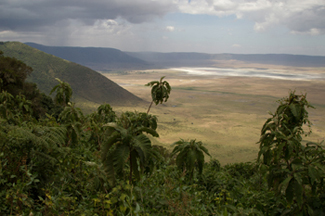
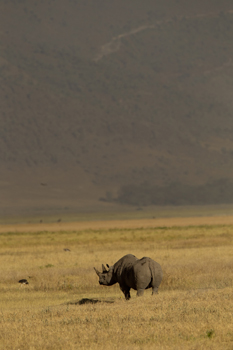
Views from the Crater Rim and inside the Crater, with a Black Rhino.
The main safari ends at this point but we hope that you choose to join us for the Tanangire extension.
See below for the details on that option.
Tarangire (optional extension)
October 9-12, 2024
Price: $3295
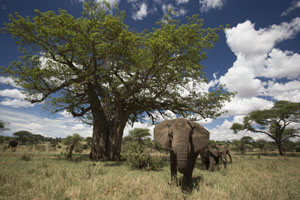 After breakfast we'll make a half day's drive to Tarangire National Park, which will offer completely different and unique scenery of massive and primitive baobob trees, great elephant herds, and much more. Tarangire is a dry habitat, quite unlike the lush grasslands of the other two locations, and with it the park offers an entirely new set of photographic opportunities. Elephants are common, and with the Baobob trees there are wonderful shooting opportunities.
After breakfast we'll make a half day's drive to Tarangire National Park, which will offer completely different and unique scenery of massive and primitive baobob trees, great elephant herds, and much more. Tarangire is a dry habitat, quite unlike the lush grasslands of the other two locations, and with it the park offers an entirely new set of photographic opportunities. Elephants are common, and with the Baobob trees there are wonderful shooting opportunities.
As I write this, Tarangire has a very large pack of African Wild Dogs in the area. The Wild Dog is one of the most endangered African predator but this wonderful predator is found in several locations in Tanzania. Dogs are wide ranging, however, and although they often hunt at dawn and dusk they can be anywhere. In a normal year, dogs would be finished with their annual denning at this time, so they won't be located near to one spot exclusively. As with any wild animal there are no guarantees with dogs, and we may see them in the most unexpected of places, or not at all.
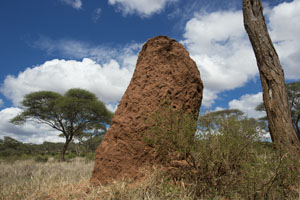
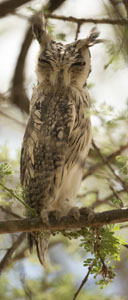
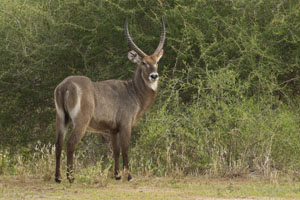
Our Itinerary from 2022:
October 3 - Killa Villa Lodge, outside Arusha. We'll arrive late into Tanzania and transfer to our lodge.
October 4 - Killa Villa Lodge. We have a full day at the lodge and the bird-rich grounds. This 'rest day' will give you the chance to photograph the local bird life, overcome jet lag, and, if need be, catch up to the group if your flight was delayed for any reason.
October 5-8 - River Camp near the Mara River - We'll fly to the northern Serengeti where we'll be met by our guides and continue to our camp where we'll have lunch. In the afternoon we'll begin our game drives in this wildlife rich area.
Each day we'll do either a full-day game drive or a morning and afternoon drive, depending upon what our photographic goals will be, the weather, and other factors. We try to space out the long all-day game drives with days where we're doing a morning and evening drive, but this schedule is flexible.
The northern Serengeti should have Gnus returning from Kenya, crossing the Mara River, but this is never a given. Other incredible highlights will include some of the most beautiful landscapes in the Serengeti where we're likely to photograph Klipspringers, Hyrax, Lions, Leopards, and a variety of birds. The northern Serengeti offers ALL of the wildlife one would find in Kenya's Masai Mara, but without the crowds.
October 9-11 - River Camp and all day game drive to Sametu Camp - We'll do a morning game drive through the northern Serengeti before beginning our drive south into the heart of the Serengeti. We'll game drive into camp, arriving around sunset. Sametu is located in the eastern side of the Serengeti and tourist traffic is less than in many other areas. In addition to all of the game -- a Black Serval morph is often seen here, we'll be in great Cheetah, Leopard, Lion, and Elephant country, and we'll be doing game drives to several major kopjes, for incredible landscape and where the big cats are often found.
October 12 - Sametu Camp to Lion's Paw, Ngorongoro Crater - We'll be leaving Sametu for a morning drive to world-famous Ngorongoro Crater, arriving in time for lunch and an afternoon game drive. While the Crater is extremely popular with tourists, there is a reason. Wildlife is abundant and tame, and our participants often consider it their favorite location. Great bull Elephants, a variety of herbivores, Golden Jackals, and a wide diversity of birds are some of the highlights, although almost all of the Serengeti's plains game is found here.
October 13- Ngorongoro Crater - We'll have a full day in the crater and the time will pass quickly!
October 14 - Killi Villa Lodge - We'll leave Lion's Paw after breakfast and head back to Arusha where participants will have a day-room before being returned to the airport for your flight home.
Participants for the Tarangire National Park extension will travel directly to the park
To get the most out of your safari and for all of your future photography, we'd recommend taking our
Digital Complete Nature Photo Course during the summer months at Hoot Hollow.
Our Lodging and Our Vehicles: This is a luxury trip, not because we're spoiling ourselves or you, but because it truly is the only way to go and to be comfortable.
The luxury camps are fantastic. That statement is really an understatement, as the camp staff is simply wonderful, the food exquisite, and the accommodations great. People simply hate leaving the camp, and feel that that experience was truly as close to experiencing the sense of 'an African safari' as one could possibly have. The Luxury Tented Camps are not what you might expect. They are luxurious; are on permanent bases; have flush toilets and hot-water showers (water brought upon request); they are roomy with canopy beds and a great front porch where you can sit to enjoy the African bush. Your wake-up call comes with juice or a hot drink of your choice. The staff is friendly and will treat you like family. Internet is available at the main dining/sitting area and every evening before dinner, we meet at the campfire for drinks and to share the day's adventures. You'll love the camps and the tents!
On the road, our vehicles have coolers with BOTTLED WATER, as well as soft drinks, and our field meals are great. Our camp dinners, at night, are superb with each camp having its own chef. You'll quickly learn why we love East Africa and want to go back year after year.
What is included:
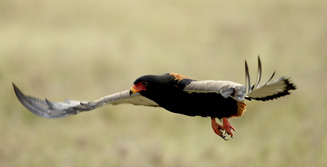
The price of the trip is based upon double occupancy, from Arusha and includes: all accommodations, including the three fabulous luxury tented camps; all park and camping fees; all special permit fees; Flying Doctors membership; internal Air Flights (to our first camp in the Northern Serengeti); all meals; bottled water and soft drinks while on game drives; unlimited water in the luxury tented camps. What's not included: items of a personal nature; drinks, alcoholic beverages and laundry at the camps; international airfare to and from Arusha; Tanzanian Visas; and any single supplement.
About Your Leaders
My wife Mary Ann and I strive to provide the most comfortable and thorough safari you will experience. Both Mary and I are professional photographers, and I'd hope you've seen our credits. These included National Geographic, National Wildlife, Ranger Rick, Natural History, Living Bird, Birder's World, and most nature/wildlife calendars.
In 1994 Mary Ann won two first place awards in the prestigious BBC Wildlife Photographer of the Year competition, in Endangered Species and in Bird Behavior. In 1998 she had three highly commended images published in the BBC competition, ALL THREE from Kenya! She won first place in the Cemex/Nature's Best photo contest in the Humor Division for Professional Photographers. In 2003 she won first place in Mammal Behavior in the Agfa all Africa photo competition with a dust bathing bull elephant from Samburu. Mary has written a number of children's books, including Leopards, Grizzly Bears, Woodpeckers, Flying Squirrels, Sunflowers, Cobras, Jupiter, Boas, Garter Snakes, Pythons, Rattlesnakes, Ducks, Chickens, Horses, and Cows, and a coffee table book, Out of the Past, Amish Tradition and Faith.
I've written several how-to wildlife photography books -- A Practical Guide to Photographing American Wildlife, The Wildlife Photographer's Field Manual, The Complete Guide to Wildlife Photography, Designing Wildlife Photographs, Photographing on Safari, A Field Guide to Photographing in East Africa, and the New Complete Guide to Wildlife Photography. In 1999 Todtri published my latest, African Wildlife, and in 1999 we produced our first instructional video, A Video Guide to Photographing on Safari with Joe and Mary Ann McDonald. The video has received rave reviews, and it is the definitive guide for preparing yourself for a safari. I've won several times for highly commended images in both the Cemex/Nature's Best and the Agfa all Africa photo competitions. In 2003 I won 2nd place in the World in Our Hands category in the BBC competition with an image from the Ndutu area of the Serengeti.
Email:info@hoothollow.com
Phone: 717-543-6423
Return to Home Page
Our Photo Safari Highlights
Three Photographers per vehicle maximum - everyone has a full row, with roof or window shooting
Photo Instruction and Guidance in the Field
Fair and Equal Rotation of Photographers - insuring equal time with Joe and Mary Ann and the Driver-Guides
Quality Time at the Best Game Areas
Quality Time and Patience - You will see all the species but
you will see and photograph behavior too.
Three Locations in the Serengeti - The ONLY safaris covering this much area
The Short Rainy Season - Great skies, fewer tourists, sunny mornings, soft light in the PM
Our Interpretation and Expertise - You can rely on our knowledge and experience to help predict
behaviors and photo opportunities
Informal Lunch and Dinner Discussions on What You Saw and what it means
Driver-Guide Tip in included in the tour price
Read our Trip Reports from this trip.




The Northern Serengeti
As you may know, the Serengeti is a derivative of a Maasai word for endless plains or endless grasses, and much of the Serengeti is indeed a huge and seemingly limitless vast grassland. One advantage the Northern Serengeti has over neighboring Kenya's southern edge of the Masai Mara is that this area is just one small section of a protected region that extends for scores of miles in either direction. In the Mara, as I pointed out above, there is only a thirty mile width before you are out of the park, and into the increasingly developed countryside. In the Northern Serengeti, you'll drive for nearly an entire day in either direction before reaching that the edges of the park. Consequently, there is a lot of game!



 Although much of our game driving, and the location of our luxury mobile camp, is just miles from the border, and we can actually see the antenna of the Mara Serena Lodge at times, the habitat is shockingly different. We were amazed, for here in the northern Serengeti we found some of the most beautiful kopjes we've seen anywhere in the Serengeti. In contrast, there are no true kopjes in the Mara, just miles away! In these photogenic rock formations we might find Leopard, Lion, and almost certainly the interesting and delicate antelope, the Klipspringer, which walks along rocks and cliffs, balanced on the tips of its hooves. Black Rhinos are here, although probably still as threatened by poaching as they are anywhere else. On average, in 2012-13, more than one Black Rhino was killed per day in Africa by poachers! Rhinos give birth to just one baby, after a gestation of 15 or 16 months. Most of this poaching occurs in southern Africa, but no where are these animals safe, and if the trend continues rhinos will soon be extinct in the wild. We have a good chance of seeing and photographing Black Rhinos, either here in the Northern Serengeti or in the Ngorongoro Crater.
Although much of our game driving, and the location of our luxury mobile camp, is just miles from the border, and we can actually see the antenna of the Mara Serena Lodge at times, the habitat is shockingly different. We were amazed, for here in the northern Serengeti we found some of the most beautiful kopjes we've seen anywhere in the Serengeti. In contrast, there are no true kopjes in the Mara, just miles away! In these photogenic rock formations we might find Leopard, Lion, and almost certainly the interesting and delicate antelope, the Klipspringer, which walks along rocks and cliffs, balanced on the tips of its hooves. Black Rhinos are here, although probably still as threatened by poaching as they are anywhere else. On average, in 2012-13, more than one Black Rhino was killed per day in Africa by poachers! Rhinos give birth to just one baby, after a gestation of 15 or 16 months. Most of this poaching occurs in southern Africa, but no where are these animals safe, and if the trend continues rhinos will soon be extinct in the wild. We have a good chance of seeing and photographing Black Rhinos, either here in the Northern Serengeti or in the Ngorongoro Crater.
The Wildebeest or Gnu migration should be in the area, perhaps traveling north to cross the Mara River or doing just the opposite, and moving south. It is impossible to say, although 'normally,' historically, the Gnus moved north into the Masai Mara in late June or July, and started heading south out of the area in September or October. Over the years, however, we've seen the plains of the Mara empty in October and crowded with Gnus a month later. Gnus follow the rains, at least to an extent, but eventually most move south to be at their birthing grounds in the southern Serengeti by February. If the Gnus are here, we'll have a great chance at photographing them at several different crossing points.





Mara River, from the Tanzania side; endangered Black Rhino; male Lion by spotlight;
an angry Leopard; Verreaux's Eagle Owl and Giraffe on the night game drive;
Klipspringer.
We'll travel from the northern Serengeti and the Mara River area to our next location in the central Serengeti, in the heart of the vast grasslands and where some of our favorite kopjes dot the land. Lion prides, cheetahs, leopards, and a wide variety of plains game and birds inhabit this area.


The Ngorongoro Crater
From the Serengeti we'll drive to the world famous Ngorongoro Crater, one of the wonders of the world, which never fails to amaze. Wildlife here is among the most habituated and accessible in all of East Africa, with some of the largest tusker bull elephants, a healthy black rhino population, and a variety of birds and mammals. We'll spend a full day in the Crater, where we should have luck with these great Elephants, as well as the variety of plains game and birds. Spotted Hyenas, Lions, Servals, Hippos, various birds of prey, and more, the Crater offers plenty of subjects.


We'll be camping near the crater rim at our outfitter's new luxury camp, Lion's Paw. We're very excited about this, and getting away from the overwhelming and often unpleasant tourist experience that staying at one of the rim's lodges presents. Mary and I camped in then Crater 33 years ago, and it was wonderful. Today, you cannot camp in the crater, and the number of lodges along the crater's rim has probably tripled. There is NO off-road driving in the crater (regardless of vague claims to the contrary), and there is a fair amount of traffic. As I mentioned above the Crater is great for bull elephants and you can usually get close to them. Even though the Crater has a fairly good concentration of black rhinos, they may, or may not, be close to the road. We won't be bored with the variety of close photo subjects.
The main safari ends at this point but we hope that you choose to join us for the Tarangire extension. See below for the details on that option.



Views from the Crater Rim and inside the Crater, with a Black Rhino.
The main safari ends at this point but we hope that you choose to join us for the Tanangire extension.
See below for the details on that option.
Tarangire (optional extension)
October 9-12, 2024
Price: $3295
 After breakfast we'll make a half day's drive to Tarangire National Park, which will offer completely different and unique scenery of massive and primitive baobob trees, great elephant herds, and much more. Tarangire is a dry habitat, quite unlike the lush grasslands of the other two locations, and with it the park offers an entirely new set of photographic opportunities. Elephants are common, and with the Baobob trees there are wonderful shooting opportunities.
After breakfast we'll make a half day's drive to Tarangire National Park, which will offer completely different and unique scenery of massive and primitive baobob trees, great elephant herds, and much more. Tarangire is a dry habitat, quite unlike the lush grasslands of the other two locations, and with it the park offers an entirely new set of photographic opportunities. Elephants are common, and with the Baobob trees there are wonderful shooting opportunities.
As I write this, Tarangire has a very large pack of African Wild Dogs in the area. The Wild Dog is one of the most endangered African predator but this wonderful predator is found in several locations in Tanzania. Dogs are wide ranging, however, and although they often hunt at dawn and dusk they can be anywhere. In a normal year, dogs would be finished with their annual denning at this time, so they won't be located near to one spot exclusively. As with any wild animal there are no guarantees with dogs, and we may see them in the most unexpected of places, or not at all.



Our Itinerary from 2022:
October 3 - Killa Villa Lodge, outside Arusha. We'll arrive late into Tanzania and transfer to our lodge.
October 4 - Killa Villa Lodge. We have a full day at the lodge and the bird-rich grounds. This 'rest day' will give you the chance to photograph the local bird life, overcome jet lag, and, if need be, catch up to the group if your flight was delayed for any reason.
October 5-8 - River Camp near the Mara River - We'll fly to the northern Serengeti where we'll be met by our guides and continue to our camp where we'll have lunch. In the afternoon we'll begin our game drives in this wildlife rich area.
Each day we'll do either a full-day game drive or a morning and afternoon drive, depending upon what our photographic goals will be, the weather, and other factors. We try to space out the long all-day game drives with days where we're doing a morning and evening drive, but this schedule is flexible.
The northern Serengeti should have Gnus returning from Kenya, crossing the Mara River, but this is never a given. Other incredible highlights will include some of the most beautiful landscapes in the Serengeti where we're likely to photograph Klipspringers, Hyrax, Lions, Leopards, and a variety of birds. The northern Serengeti offers ALL of the wildlife one would find in Kenya's Masai Mara, but without the crowds.
October 9-11 - River Camp and all day game drive to Sametu Camp - We'll do a morning game drive through the northern Serengeti before beginning our drive south into the heart of the Serengeti. We'll game drive into camp, arriving around sunset. Sametu is located in the eastern side of the Serengeti and tourist traffic is less than in many other areas. In addition to all of the game -- a Black Serval morph is often seen here, we'll be in great Cheetah, Leopard, Lion, and Elephant country, and we'll be doing game drives to several major kopjes, for incredible landscape and where the big cats are often found.
October 12 - Sametu Camp to Lion's Paw, Ngorongoro Crater - We'll be leaving Sametu for a morning drive to world-famous Ngorongoro Crater, arriving in time for lunch and an afternoon game drive. While the Crater is extremely popular with tourists, there is a reason. Wildlife is abundant and tame, and our participants often consider it their favorite location. Great bull Elephants, a variety of herbivores, Golden Jackals, and a wide diversity of birds are some of the highlights, although almost all of the Serengeti's plains game is found here.
October 13- Ngorongoro Crater - We'll have a full day in the crater and the time will pass quickly!
October 14 - Killi Villa Lodge - We'll leave Lion's Paw after breakfast and head back to Arusha where participants will have a day-room before being returned to the airport for your flight home.
Participants for the Tarangire National Park extension will travel directly to the park
To get the most out of your safari and for all of your future photography, we'd recommend taking our
Digital Complete Nature Photo Course during the summer months at Hoot Hollow.
Our Lodging and Our Vehicles: This is a luxury trip, not because we're spoiling ourselves or you, but because it truly is the only way to go and to be comfortable.
The luxury camps are fantastic. That statement is really an understatement, as the camp staff is simply wonderful, the food exquisite, and the accommodations great. People simply hate leaving the camp, and feel that that experience was truly as close to experiencing the sense of 'an African safari' as one could possibly have. The Luxury Tented Camps are not what you might expect. They are luxurious; are on permanent bases; have flush toilets and hot-water showers (water brought upon request); they are roomy with canopy beds and a great front porch where you can sit to enjoy the African bush. Your wake-up call comes with juice or a hot drink of your choice. The staff is friendly and will treat you like family. Internet is available at the main dining/sitting area and every evening before dinner, we meet at the campfire for drinks and to share the day's adventures. You'll love the camps and the tents!
On the road, our vehicles have coolers with BOTTLED WATER, as well as soft drinks, and our field meals are great. Our camp dinners, at night, are superb with each camp having its own chef. You'll quickly learn why we love East Africa and want to go back year after year.
What is included:

The price of the trip is based upon double occupancy, from Arusha and includes: all accommodations, including the three fabulous luxury tented camps; all park and camping fees; all special permit fees; Flying Doctors membership; internal Air Flights (to our first camp in the Northern Serengeti); all meals; bottled water and soft drinks while on game drives; unlimited water in the luxury tented camps. What's not included: items of a personal nature; drinks, alcoholic beverages and laundry at the camps; international airfare to and from Arusha; Tanzanian Visas; and any single supplement.
About Your Leaders
My wife Mary Ann and I strive to provide the most comfortable and thorough safari you will experience. Both Mary and I are professional photographers, and I'd hope you've seen our credits. These included National Geographic, National Wildlife, Ranger Rick, Natural History, Living Bird, Birder's World, and most nature/wildlife calendars.
In 1994 Mary Ann won two first place awards in the prestigious BBC Wildlife Photographer of the Year competition, in Endangered Species and in Bird Behavior. In 1998 she had three highly commended images published in the BBC competition, ALL THREE from Kenya! She won first place in the Cemex/Nature's Best photo contest in the Humor Division for Professional Photographers. In 2003 she won first place in Mammal Behavior in the Agfa all Africa photo competition with a dust bathing bull elephant from Samburu. Mary has written a number of children's books, including Leopards, Grizzly Bears, Woodpeckers, Flying Squirrels, Sunflowers, Cobras, Jupiter, Boas, Garter Snakes, Pythons, Rattlesnakes, Ducks, Chickens, Horses, and Cows, and a coffee table book, Out of the Past, Amish Tradition and Faith.
I've written several how-to wildlife photography books -- A Practical Guide to Photographing American Wildlife, The Wildlife Photographer's Field Manual, The Complete Guide to Wildlife Photography, Designing Wildlife Photographs, Photographing on Safari, A Field Guide to Photographing in East Africa, and the New Complete Guide to Wildlife Photography. In 1999 Todtri published my latest, African Wildlife, and in 1999 we produced our first instructional video, A Video Guide to Photographing on Safari with Joe and Mary Ann McDonald. The video has received rave reviews, and it is the definitive guide for preparing yourself for a safari. I've won several times for highly commended images in both the Cemex/Nature's Best and the Agfa all Africa photo competitions. In 2003 I won 2nd place in the World in Our Hands category in the BBC competition with an image from the Ndutu area of the Serengeti.
Email:info@hoothollow.com
Phone: 717-543-6423
Return to Home Page
Our Photo Safari Highlights
Three Photographers per vehicle maximum - everyone has a full row, with roof or window shooting
Photo Instruction and Guidance in the Field
Fair and Equal Rotation of Photographers - insuring equal time with Joe and Mary Ann and the Driver-Guides
Quality Time at the Best Game Areas
Quality Time and Patience - You will see all the species but
you will see and photograph behavior too.
Three Locations in the Serengeti - The ONLY safaris covering this much area
The Short Rainy Season - Great skies, fewer tourists, sunny mornings, soft light in the PM
Our Interpretation and Expertise - You can rely on our knowledge and experience to help predict
behaviors and photo opportunities
Informal Lunch and Dinner Discussions on What You Saw and what it means
Driver-Guide Tip in included in the tour price
Read our Trip Reports from this trip.




The Northern Serengeti
As you may know, the Serengeti is a derivative of a Maasai word for endless plains or endless grasses, and much of the Serengeti is indeed a huge and seemingly limitless vast grassland. One advantage the Northern Serengeti has over neighboring Kenya's southern edge of the Masai Mara is that this area is just one small section of a protected region that extends for scores of miles in either direction. In the Mara, as I pointed out above, there is only a thirty mile width before you are out of the park, and into the increasingly developed countryside. In the Northern Serengeti, you'll drive for nearly an entire day in either direction before reaching that the edges of the park. Consequently, there is a lot of game!



 Although much of our game driving, and the location of our luxury mobile camp, is just miles from the border, and we can actually see the antenna of the Mara Serena Lodge at times, the habitat is shockingly different. We were amazed, for here in the northern Serengeti we found some of the most beautiful kopjes we've seen anywhere in the Serengeti. In contrast, there are no true kopjes in the Mara, just miles away! In these photogenic rock formations we might find Leopard, Lion, and almost certainly the interesting and delicate antelope, the Klipspringer, which walks along rocks and cliffs, balanced on the tips of its hooves. Black Rhinos are here, although probably still as threatened by poaching as they are anywhere else. On average, in 2012-13, more than one Black Rhino was killed per day in Africa by poachers! Rhinos give birth to just one baby, after a gestation of 15 or 16 months. Most of this poaching occurs in southern Africa, but no where are these animals safe, and if the trend continues rhinos will soon be extinct in the wild. We have a good chance of seeing and photographing Black Rhinos, either here in the Northern Serengeti or in the Ngorongoro Crater.
Although much of our game driving, and the location of our luxury mobile camp, is just miles from the border, and we can actually see the antenna of the Mara Serena Lodge at times, the habitat is shockingly different. We were amazed, for here in the northern Serengeti we found some of the most beautiful kopjes we've seen anywhere in the Serengeti. In contrast, there are no true kopjes in the Mara, just miles away! In these photogenic rock formations we might find Leopard, Lion, and almost certainly the interesting and delicate antelope, the Klipspringer, which walks along rocks and cliffs, balanced on the tips of its hooves. Black Rhinos are here, although probably still as threatened by poaching as they are anywhere else. On average, in 2012-13, more than one Black Rhino was killed per day in Africa by poachers! Rhinos give birth to just one baby, after a gestation of 15 or 16 months. Most of this poaching occurs in southern Africa, but no where are these animals safe, and if the trend continues rhinos will soon be extinct in the wild. We have a good chance of seeing and photographing Black Rhinos, either here in the Northern Serengeti or in the Ngorongoro Crater.
The Wildebeest or Gnu migration should be in the area, perhaps traveling north to cross the Mara River or doing just the opposite, and moving south. It is impossible to say, although 'normally,' historically, the Gnus moved north into the Masai Mara in late June or July, and started heading south out of the area in September or October. Over the years, however, we've seen the plains of the Mara empty in October and crowded with Gnus a month later. Gnus follow the rains, at least to an extent, but eventually most move south to be at their birthing grounds in the southern Serengeti by February. If the Gnus are here, we'll have a great chance at photographing them at several different crossing points.





Mara River, from the Tanzania side; endangered Black Rhino; male Lion by spotlight;
an angry Leopard; Verreaux's Eagle Owl and Giraffe on the night game drive;
Klipspringer.
We'll travel from the northern Serengeti and the Mara River area to our next location in the central Serengeti, in the heart of the vast grasslands and where some of our favorite kopjes dot the land. Lion prides, cheetahs, leopards, and a wide variety of plains game and birds inhabit this area.


The Ngorongoro Crater
From the Serengeti we'll drive to the world famous Ngorongoro Crater, one of the wonders of the world, which never fails to amaze. Wildlife here is among the most habituated and accessible in all of East Africa, with some of the largest tusker bull elephants, a healthy black rhino population, and a variety of birds and mammals. We'll spend a full day in the Crater, where we should have luck with these great Elephants, as well as the variety of plains game and birds. Spotted Hyenas, Lions, Servals, Hippos, various birds of prey, and more, the Crater offers plenty of subjects.


We'll be camping near the crater rim at our outfitter's new luxury camp, Lion's Paw. We're very excited about this, and getting away from the overwhelming and often unpleasant tourist experience that staying at one of the rim's lodges presents. Mary and I camped in then Crater 33 years ago, and it was wonderful. Today, you cannot camp in the crater, and the number of lodges along the crater's rim has probably tripled. There is NO off-road driving in the crater (regardless of vague claims to the contrary), and there is a fair amount of traffic. As I mentioned above the Crater is great for bull elephants and you can usually get close to them. Even though the Crater has a fairly good concentration of black rhinos, they may, or may not, be close to the road. We won't be bored with the variety of close photo subjects.
The main safari ends at this point but we hope that you choose to join us for the Tarangire extension. See below for the details on that option.



Views from the Crater Rim and inside the Crater, with a Black Rhino.
The main safari ends at this point but we hope that you choose to join us for the Tanangire extension.
See below for the details on that option.
Tarangire (optional extension)
October 9-12, 2024
Price: $3295
 After breakfast we'll make a half day's drive to Tarangire National Park, which will offer completely different and unique scenery of massive and primitive baobob trees, great elephant herds, and much more. Tarangire is a dry habitat, quite unlike the lush grasslands of the other two locations, and with it the park offers an entirely new set of photographic opportunities. Elephants are common, and with the Baobob trees there are wonderful shooting opportunities.
After breakfast we'll make a half day's drive to Tarangire National Park, which will offer completely different and unique scenery of massive and primitive baobob trees, great elephant herds, and much more. Tarangire is a dry habitat, quite unlike the lush grasslands of the other two locations, and with it the park offers an entirely new set of photographic opportunities. Elephants are common, and with the Baobob trees there are wonderful shooting opportunities.
As I write this, Tarangire has a very large pack of African Wild Dogs in the area. The Wild Dog is one of the most endangered African predator but this wonderful predator is found in several locations in Tanzania. Dogs are wide ranging, however, and although they often hunt at dawn and dusk they can be anywhere. In a normal year, dogs would be finished with their annual denning at this time, so they won't be located near to one spot exclusively. As with any wild animal there are no guarantees with dogs, and we may see them in the most unexpected of places, or not at all.



Our Itinerary from 2022:
October 3 - Killa Villa Lodge, outside Arusha. We'll arrive late into Tanzania and transfer to our lodge.
October 4 - Killa Villa Lodge. We have a full day at the lodge and the bird-rich grounds. This 'rest day' will give you the chance to photograph the local bird life, overcome jet lag, and, if need be, catch up to the group if your flight was delayed for any reason.
October 5-8 - River Camp near the Mara River - We'll fly to the northern Serengeti where we'll be met by our guides and continue to our camp where we'll have lunch. In the afternoon we'll begin our game drives in this wildlife rich area.
Each day we'll do either a full-day game drive or a morning and afternoon drive, depending upon what our photographic goals will be, the weather, and other factors. We try to space out the long all-day game drives with days where we're doing a morning and evening drive, but this schedule is flexible.
The northern Serengeti should have Gnus returning from Kenya, crossing the Mara River, but this is never a given. Other incredible highlights will include some of the most beautiful landscapes in the Serengeti where we're likely to photograph Klipspringers, Hyrax, Lions, Leopards, and a variety of birds. The northern Serengeti offers ALL of the wildlife one would find in Kenya's Masai Mara, but without the crowds.
October 9-11 - River Camp and all day game drive to Sametu Camp - We'll do a morning game drive through the northern Serengeti before beginning our drive south into the heart of the Serengeti. We'll game drive into camp, arriving around sunset. Sametu is located in the eastern side of the Serengeti and tourist traffic is less than in many other areas. In addition to all of the game -- a Black Serval morph is often seen here, we'll be in great Cheetah, Leopard, Lion, and Elephant country, and we'll be doing game drives to several major kopjes, for incredible landscape and where the big cats are often found.
October 12 - Sametu Camp to Lion's Paw, Ngorongoro Crater - We'll be leaving Sametu for a morning drive to world-famous Ngorongoro Crater, arriving in time for lunch and an afternoon game drive. While the Crater is extremely popular with tourists, there is a reason. Wildlife is abundant and tame, and our participants often consider it their favorite location. Great bull Elephants, a variety of herbivores, Golden Jackals, and a wide diversity of birds are some of the highlights, although almost all of the Serengeti's plains game is found here.
October 13- Ngorongoro Crater - We'll have a full day in the crater and the time will pass quickly!
October 14 - Killi Villa Lodge - We'll leave Lion's Paw after breakfast and head back to Arusha where participants will have a day-room before being returned to the airport for your flight home.
Participants for the Tarangire National Park extension will travel directly to the park
To get the most out of your safari and for all of your future photography, we'd recommend taking our
Digital Complete Nature Photo Course during the summer months at Hoot Hollow.
Our Lodging and Our Vehicles: This is a luxury trip, not because we're spoiling ourselves or you, but because it truly is the only way to go and to be comfortable.
The luxury camps are fantastic. That statement is really an understatement, as the camp staff is simply wonderful, the food exquisite, and the accommodations great. People simply hate leaving the camp, and feel that that experience was truly as close to experiencing the sense of 'an African safari' as one could possibly have. The Luxury Tented Camps are not what you might expect. They are luxurious; are on permanent bases; have flush toilets and hot-water showers (water brought upon request); they are roomy with canopy beds and a great front porch where you can sit to enjoy the African bush. Your wake-up call comes with juice or a hot drink of your choice. The staff is friendly and will treat you like family. Internet is available at the main dining/sitting area and every evening before dinner, we meet at the campfire for drinks and to share the day's adventures. You'll love the camps and the tents!
On the road, our vehicles have coolers with BOTTLED WATER, as well as soft drinks, and our field meals are great. Our camp dinners, at night, are superb with each camp having its own chef. You'll quickly learn why we love East Africa and want to go back year after year.
The price of the trip is based upon double occupancy, from Arusha and includes: all accommodations, including the three fabulous luxury tented camps; all park and camping fees; all special permit fees; Flying Doctors membership; internal Air Flights (to our first camp in the Northern Serengeti); all meals; bottled water and soft drinks while on game drives; unlimited water in the luxury tented camps. What's not included: items of a personal nature; drinks, alcoholic beverages and laundry at the camps; international airfare to and from Arusha; Tanzanian Visas; and any single supplement.About Your Leaders
My wife Mary Ann and I strive to provide the most comfortable and thorough safari you will experience. Both Mary and I are professional photographers, and I'd hope you've seen our credits. These included National Geographic, National Wildlife, Ranger Rick, Natural History, Living Bird, Birder's World, and most nature/wildlife calendars.
In 1994 Mary Ann won two first place awards in the prestigious BBC Wildlife Photographer of the Year competition, in Endangered Species and in Bird Behavior. In 1998 she had three highly commended images published in the BBC competition, ALL THREE from Kenya! She won first place in the Cemex/Nature's Best photo contest in the Humor Division for Professional Photographers. In 2003 she won first place in Mammal Behavior in the Agfa all Africa photo competition with a dust bathing bull elephant from Samburu. Mary has written a number of children's books, including Leopards, Grizzly Bears, Woodpeckers, Flying Squirrels, Sunflowers, Cobras, Jupiter, Boas, Garter Snakes, Pythons, Rattlesnakes, Ducks, Chickens, Horses, and Cows, and a coffee table book, Out of the Past, Amish Tradition and Faith.
I've written several how-to wildlife photography books -- A Practical Guide to Photographing American Wildlife, The Wildlife Photographer's Field Manual, The Complete Guide to Wildlife Photography, Designing Wildlife Photographs, Photographing on Safari, A Field Guide to Photographing in East Africa, and the New Complete Guide to Wildlife Photography. In 1999 Todtri published my latest, African Wildlife, and in 1999 we produced our first instructional video, A Video Guide to Photographing on Safari with Joe and Mary Ann McDonald. The video has received rave reviews, and it is the definitive guide for preparing yourself for a safari. I've won several times for highly commended images in both the Cemex/Nature's Best and the Agfa all Africa photo competitions. In 2003 I won 2nd place in the World in Our Hands category in the BBC competition with an image from the Ndutu area of the Serengeti.
Phone: 717-543-6423


